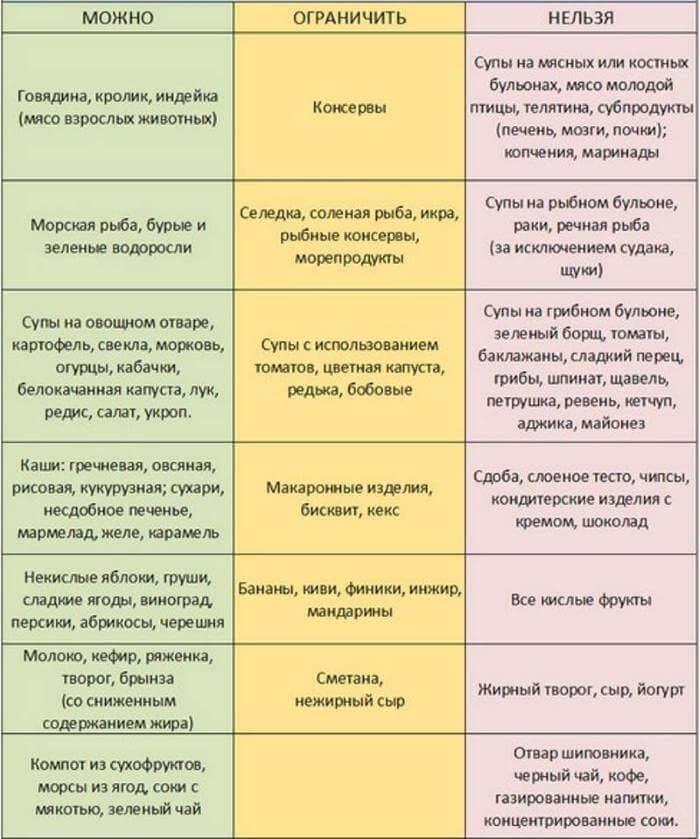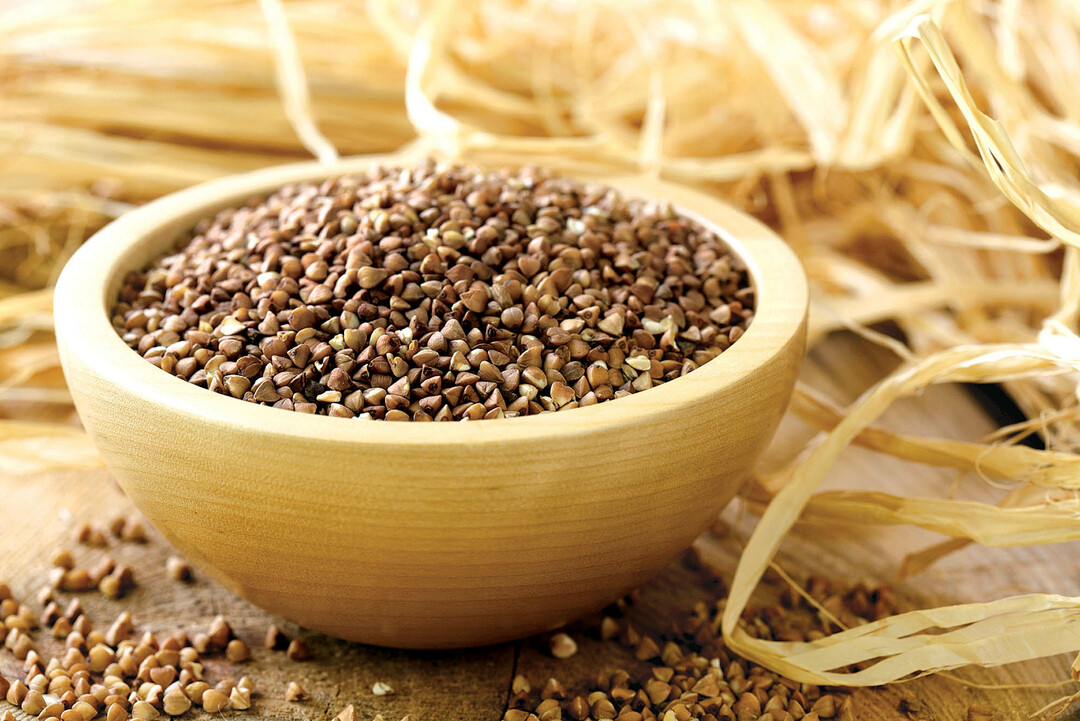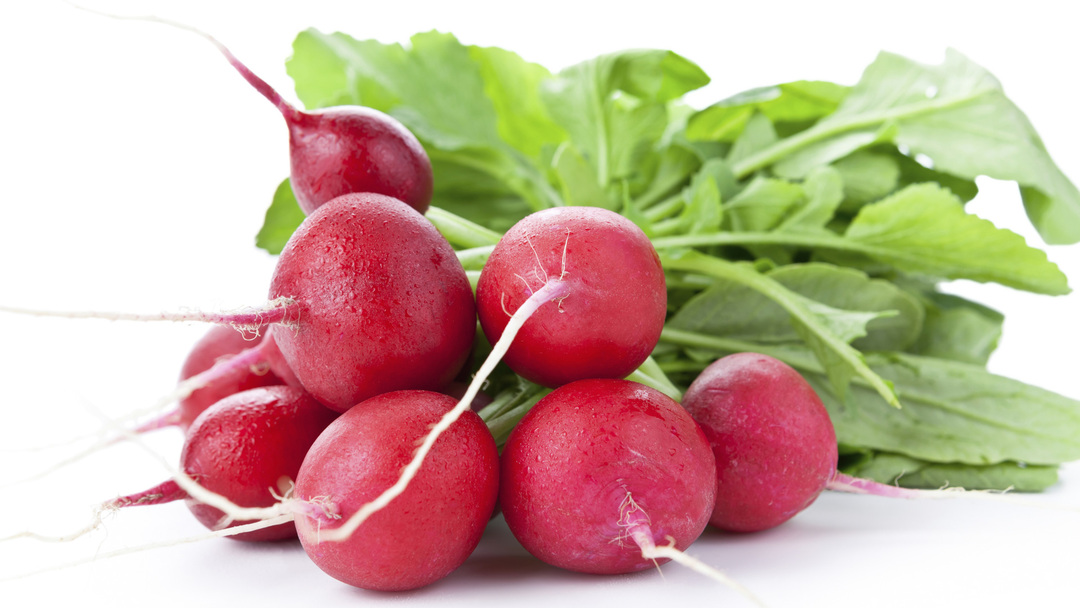Carambola: benefit and harm

Carambola is a curiosity for the Slavs and a quite familiar fruit for the inhabitants of the eastern countries.It is there that he regularly appears in the diet of ordinary residents, as we have apples.In appearance, carambola is an interesting fruit.It has several pointed tips, due to which the cut pieces resemble the shape of a star.
Interesting! The Moluccas are the birthplace of carambola, but today it grows freely in the territories of Indonesia, Ghana, Guyana, Brazil, Sri Lanka and Israel.Also, some varieties of this fruit are cultivated in the US, South China, India, Vietnam.
The unusual and special ornamentality of the fruit makes one doubt whether it is useful carambola, how to properly eat it?Let's work it out together.
chemical composition
Nutritional value of 100 g:
- Calories 31 kcal
- Proteins 1 g
- Fats 3 g
- Carbohydrates 7 g
- Dietary Fiber 8 g
- Water 38 g
InThe composition of carambola includes many substances that are useful and indispensable for the human body:
-
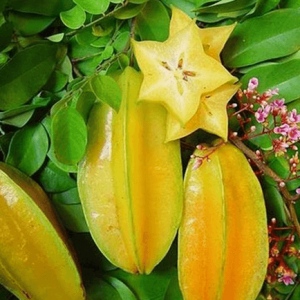 Phosphorus;
Phosphorus; - Copper;
- Selenium;
- Iron;
- Potassium;
- Zinc;
- Sodium;
- Record amount of calcium;
- Vitamins: C, A, E, PP;
- Almost the whole group of vitamin B.
- Oxalic acid.
Important! Due to hippoallergenicity, carambola in moderate amounts is harmless for young children and pregnant women.
Useful properties
Regular consumption of this fruit contributes:
-
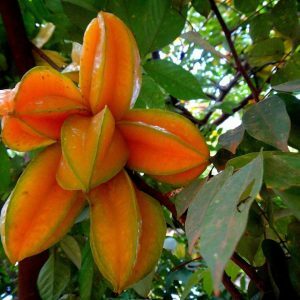 accelerate the process of hematopoiesis;
accelerate the process of hematopoiesis; - improved immunity;
- relieve headache and fever for colds;
- relief of asthma symptoms;
- restoration of functions of the gastrointestinal tract with diarrhea and increased level of bile;
- facilitating the state of a hangover;
- accelerating the work of the kidneys with mild diuretic effect;
- removal of bouts of vomiting and nausea;
- to reduce pain and knot sizes with hemorrhoids;
- normalization of blood pressure;
- recovery of reproductive function.
Apply not only the fruits of this fruit plant, but also the leaves and seeds.Fruits are dried and eaten raw, on the basis of leaves and seeds make tinctures, broths.
In cosmetology and dermatology, a positive effect of carambola on the skin, nails, hair, as well as the treatment of ringworm, chickenpox and eczema was noted.
Important! Useful properties of the seeds of carambola are especially valuable for women during lactation, especially for those who have problems with the amount of milk.
Harmful and contraindications
Because of the oxalic acid content of carambola, the taste is quite acidic, so it is advisable to introduce it with caution in the diet, if available:
- peptic ulcer;
- gastritis;
- enterocolitis;
- renal failure or impaired salt metabolism.
Interesting! Carambola juice easily removes complex and persistent stains on the tissues.This useful property of carambola is successfully used by the people of Sri Lanka, where the plant grows in abundance.
Useful advices for use
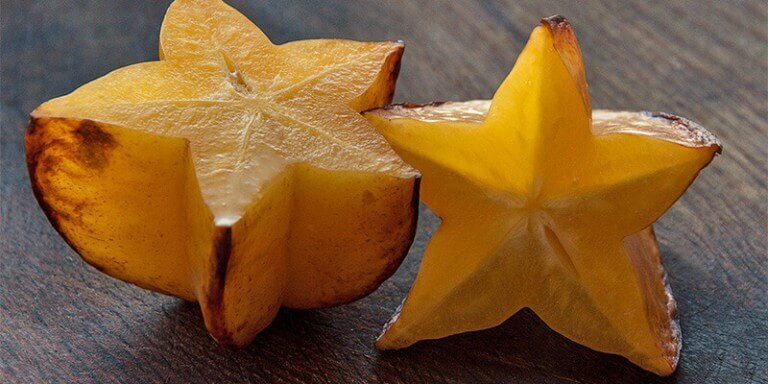
- Due to the decorative appearance, carambola is often used in restaurants and bars for decorating cocktails, salads, desserts.
- Fruits can act as a full component in the production of sauces for fish and meat dishes, as well as perfectly combined with any vegetables.
- A garnish made from fried in cream butter caramels is considered to be original and delicious.
- A slightly unripe fruit is used for cooking vegetable stew, pickling and pickling.
- Fruit produces desserts, jellies, mousses with an exquisite and very delicate taste.
Due to the unusual taste of carambola, it can be safely called one of the most exotic fruits.Some varieties resemble plum, apples and grapes at the same time, while others are gooseberry with a tart plum smell.And if you long to soak the pulp, you can "find" in it cucumber notes.
Good to know! The fragrance of the carambola is enhanced if it is boiled in sugar syrup before being consumed before it is completely soft.

